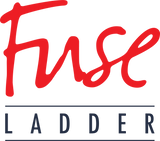What’s So Great About the Fuse Ladder for Pilates Tower Exercises for Legs (Part 2)

We’ve talked about Pilates tower exercises that you do in the classical Pilates repertoire on the Tower or Cadillac, but what about ones that aren’t taught or that you can’t do? What makes the Fuse Ladder special?
Fuse Ladder Pilates Tower Exercises Standing
First off, the Fuse Ladder was created specifically to bring more standing exercises with support to the Pilates tower and the physical therapy and rehab.
With 27 different places to hook the springs, you can use them to challenge any ability level.
In this clip from a Fuse Ladder teacher training in at Pilates Circuit London, Creator Mariska Breland is teaching a group a short sequence of standing leg exercises. There are hundreds of variations of exercises you can do to work inner and outer thighs, hamstrings, quads, and even the lower leg. You can go hands free to challenge balance or you can hold onto the ladder rungs if you need a little assistance. Need more weight? Combine two springs. Or, slide the springs higher or get further from the ladder. Need less? Move closer or lower the springs.
Fuse Ladder Pilates Tower Exercises Climbing
The stall bars offer far more variation than a traditional Pilates tower or Cadillac ever could. You can climb up and down the ladder, use it for squats, or perform barre exercises. You can put one or both feet in the springs at the same time as you climb. You can do a lunge on the ladder with hands in the springs. Take a big step up or a small one. The Fuse Ladder comes with a cushioned rung cover to make it comfortable to do these exercises barefoot (although you can always wear tennis shoes if you’d like.)
Climbing is a full body exercise (bonus!), so if you’re doing leg work, your arms and core are getting a workout as well.
Fuse Ladder Pilates Tower Exercises – Hips in Straps
Take springs and hook them high or on the outside overhead hooks. From here step the legs through the straps so they are around the hips. This is a wonderful way to offload body weight to help if you or your client is deconditioned or is recovery from an illness or injury. Plus, you get amazing feedback into hips, which is great for those of us with instability there.
Stay tuned for more ways to use the Fuse Ladder for exercise and rehab in upcoming posts.







